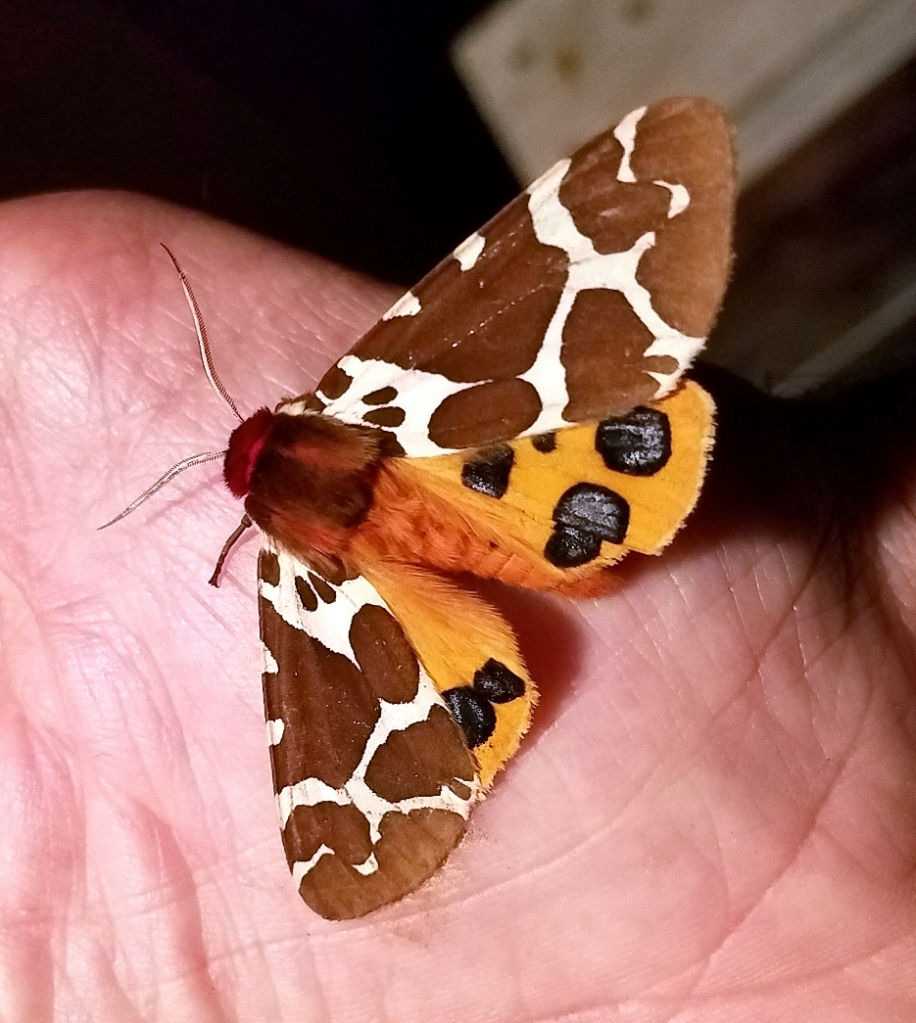So I’m wondering how to begin this new blog and have decided to write a little bit about my mothing adventure last summer. It all began one morning in June when my Canon Rebel camera broke and I was left with just my Samsung cell phone and its camera. Up until that point I had not used the cell phone camera much and what I had taken with it was not that good. Now, with my favorite camera broken and short on funds for repairs or a replacement I had to learn to use the cell phone. I decided to photograph the moths that came to the porch light at night to learn more about the cell phone camera.
A few nights a week as sunset approached I would turn on the porch light. When it got dark I would carefully open the door and look around the light to see what had flown in. I was seldom disappointed. Warm humid nights were the best for moths. As the weeks went on it became apparent that there was a progression of moth species. Different moths have different flight times and very few will be seen all summer. And moths aren’t the only things attracted to the lights. Beetles, harvestmen, thrips, caddisflies, midges, and leaf hoppers all came to the light. I’m sure the harvestmen were hunting for small insects although they seem willing to eat anything. One was tasting a mix of molasses and overripe fruit I put out to attract moths.

I keep a list of the various plants and animals on my property adding to it whenever I find a new species. When I began my mothing project I had documented about 30 species or about two species a year. When the summer ended I had added another 102 moth species and many more unidentified but saved as photos. During my moth adventure last summer I found three sources extremely helpful for identifying moths. The first one is the Peterson Field Guide to Moths of Northeastern North America by David Beadle and Seabrooke Leckie. The other two are the BugGuide website and the Moth Photographers Group website. And now I have found another source to consult: Butterflies and Moths of North America (BAMONA).




Thank you for including the moth reference guides and the info on how you got the photos. Great idea. You’ve got a good steady hand with your cellphone because those are beautifully sharp photos.
LikeLike
You’re welcome! I have another reference guide to add: Moths and Caterpillars of the Northwoods by Jim Sogaard. He covers 300 species typically encountered in the area around Lake Superior, Lake Huron, and the northern part of Lake Michigan.
One of my secrets to getting good photos with the cellphone is to take many shots up close and a then bit back. Usually works fine but for the very tiny moths it is a challenge. I crop them down and then do some minor adjustment to the light source which in this case was an incandescent bulb (tends to give everything an orange cast) and contrast/exposure. If the light source is the sun I only adjust the exposure/contrast a little although that is often not necessary.
LikeLike